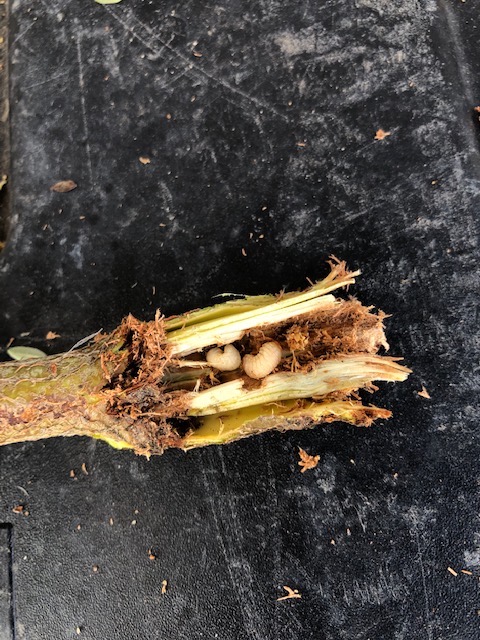
Poplar and willow borer
damaging
This is the poplar and willow borer (Cryptorhynchus lapathi), a type of weevil that lays eggs inside the stems or branches of poplar, or in this case, willow. It tends to infest young willow and poplars. This species was introduced in the United States in the late 1800's.
Adults are brownish, stout weevils, 8–10 mm long, with long curved snouts. The adults emerge in spring and feed just inside the bark of new shoots. In the summer, females chew holes in the bark of stems where they deposit a single egg.
The larvae that hatch from the egg and excavate long tunnels inside the stem. Sometimes you can see the sawdust and frass (insect poo) that they push out of the holes. In larger branches or trunks, damage from boring can girdle and kill the tree.
New adults emerge in late July and August. The larvae overwinter in tunnels inside the stems and the adults overwinter in debris below the plant. It takes 1 – 3 years to complete their life cycle.
Control:
- Look for stems that are falling over, cracks, breakage or holes and cut them off at the base of the plant. Cut off all of the damaged stems. Burn if appropriate, or dispose of this in the landfill.
- If holes are found, insert a long wire to kill the larvae.
- In spring, scout for adult weevils feeding on new shoots. Hand-pick and destroy.
The larvae of this weevil may be parasitized by ichneumonid wasps and are a potential food source for ants and birds.
Source:
Ostry, M. E., Wilson, L. F., McNabb, H. S., Moore, L. M. (1989). A Guide to insect, disease, and animal pests of poplars. Washington, DC: U.S. Dept. of Agriculture, Forest Service.

